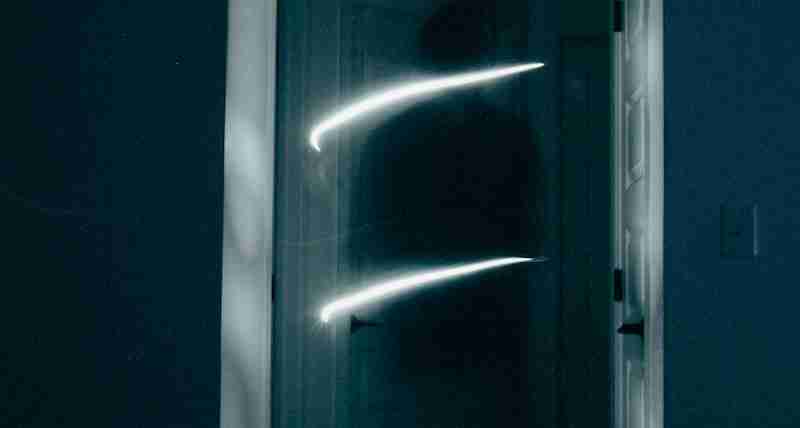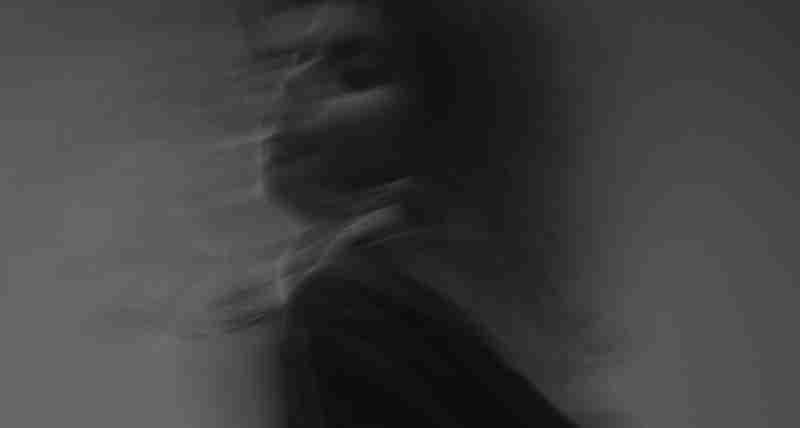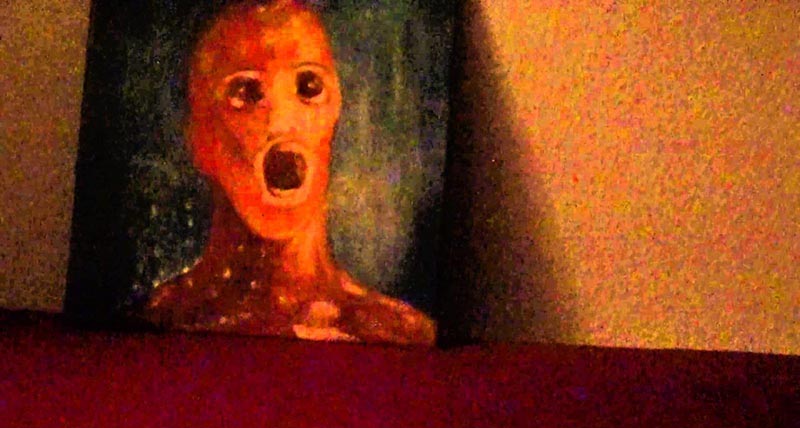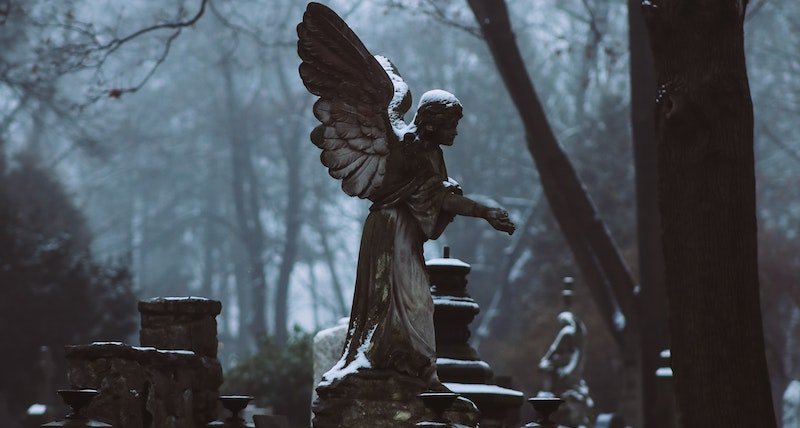These hauntings are like invisible fingerprints, leaving an indelible mark on our world, more common than we might think. But tread carefully, for the line between residual and intelligent hauntings is a fine one, and it’s all too easy to mistake one for the other.
Residual hauntings, you see, are not your typical ghost stories. They might not even involve what we traditionally think of as ghosts. Instead, they are like a film loop, a recording of past events that play over and over again, oblivious to the present.
Any physical disturbances, like doors or windows opening and closing, are likely the result of energy discharging itself, not the work of conscious spirits.
Table of Contents
What Is a Residual Haunting?
A residual haunting is a type of paranormal phenomenon believed to be a replay of a traumatic or significant event from the past. The “ghosts” responsible for this type of activity are known as residual ghosts or residuals.
The term originates from the idea that energy from these events can be “residual,” or leftover, and imprinted into the environment where the event occurred.
Related: The Anguished Man: The Haunting Tale of a Cursed Painting
This concept is closely related to the Stone Tape Theory, a hypothesis suggesting that emotional or traumatic events can somehow be “stored” in physical objects and replayed under certain conditions.

Manifestations of Residual Hauntings
Have you ever wondered how residual hauntings make their presence known? It’s a fascinating spectacle, really.
Imagine a spectral orchestra playing a symphony of the past, its notes composed of inexplicable sounds, apparitions, and even scents. The music, however, is not for the living. It’s a performance stuck in a timeless loop, oblivious to the audience of the present.
Consider this: you might hear the soft patter of unseen footsteps echoing in an empty hallway, or the faint strains of a long-forgotten melody wafting through the air.
You may also like: Old Epworth Rectory Haunting: The Bizarre ‘Wesley Poltergeist’
You might even catch a whiff of a perfume that hasn’t been used for decades. And then, there are the apparitions. Ghostly figures engaged in actions as mundane as walking down a hallway or as dramatic as reenacting a historical event.
This could explain one of Chicago’s most famous hauntings – Resurrection Mary. You can read more about this strange paranormal manifestation in this article here: Resurrection Mary: The Eerie Tale of Chicago’s Most Famous Ghost.
But here’s the catch – they don’t interact with the living. They’re like actors on a stage, forever repeating the same scene in a play written by the past.
So, what signs should you look for?
- Apparitions that seem stuck in a loop, repeating the same actions in the same spots, oblivious to the living observers.
- Unexplained sounds, such as footsteps, voices, or knocking, that seem to come from nowhere.
- An unusual level of humidity at the location, suggesting that water embedded in the location might be holding a “recording” of the haunting.
When and Where Do Residual Hauntings Occur?
Residual hauntings can occur anywhere, but they seem to favor places steeped in intense emotions or marred by traumatic events.
Old buildings whispering tales of the past, battlefields scarred by the echoes of war, homes that have witnessed tragedy – these are the stages preferred by the actors of residual hauntings.
Certain conditions, such as high humidity levels, are often reported during residual hauntings.
Furthermore, the Stone Tape Theory suggests that materials like stone or wood could serve as a sort of ‘hard drive,’ recording and playing back significant events.
This could explain why old structures, with their stone walls and wooden beams, are often associated with residual hauntings.
To give you a clearer picture, let’s delve into some of the most common manifestations of residual hauntings:
- Auditory Phenomena: Unexplained sounds such as footsteps, voices, or music.
- Visual Apparitions: Ghostly figures repeating certain actions, like walking or climbing stairs.
- Olfactory Manifestations: Mysterious scents that seem to come from nowhere.
Residual Hauntings vs. Other Types of Hauntings
Residual vs. Intelligent Hauntings
Have you ever wondered about the differences between residual and intelligent hauntings? While both fall under the broad umbrella of paranormal phenomena, they are as different as night and day.
The key distinction? It all boils down to the level of interaction and consciousness involved.
Imagine watching a movie that replays the same scene over and over again, oblivious to its audience. This is the essence of a residual haunting.
Interesting read: Communicating With the Deceased: Understanding and Interpreting Messages
The apparitions involved in these hauntings seem stuck in a time loop, replaying their actions without deviating from their set pattern. They don’t respond to questions or attempts to communicate and seem unaware of their surroundings.
It’s as if they are trapped in their own spectral world, unable to interact with ours.
On the other side, we have intelligent hauntings. These involve entities believed to be the conscious spirits of deceased individuals.
Unlike their residual counterparts, these spirits are aware of their surroundings and can interact with the living world.
They might respond to questions, move objects, or even exhibit personality traits of the individuals they were in life. The activity in intelligent hauntings is not confined to a repetitive loop, making each encounter unique and unpredictable.
Residual Hauntings vs. Poltergeists
Now, let’s turn our attention to poltergeists, another category of paranormal phenomena that stands distinct from residual hauntings.
The term “poltergeist” comes from German words meaning “noisy ghost,” and indeed, poltergeist activity is often characterized by physical disturbances such as moving or levitating objects, loud noises, or even physical attacks.
In fact, I wrote this interesting article about an unusual poltergeist phenomenon that happened in the 17th century in Scotland: The Glenluce Devil: The Tale of a Powerful Poltergeist in 17th Century Scotland.
While residual hauntings are passive and non-interactive, poltergeist activity is quite the opposite. Poltergeists seem to expend energy to interact with their environment, often causing noticeable and sometimes dramatic physical effects.
But what’s the source of this energy?
Interestingly, poltergeist activity is often associated with a particular individual, usually undergoing emotional stress or turmoil, suggesting a psychic or psychokinetic origin.
In stark contrast, residual hauntings are tied to a location and the events that took place there, with no conscious entity involved. It’s like the walls have memories, replaying past events like a spectral echo.
You can read more about poltergeists vs. residual hauntings in this article I have here: What Is the Difference Between Poltergeists, Ghosts and Other Entities?

Theories and Explanations
While paranormal research is not widely recognized by mainstream science, several theories attempt to explain phenomena like residual hauntings using scientific concepts.
One such theory is the Stone Tape Theory, which posits that emotional or traumatic events can leave an energy imprint on physical objects, such as stone or wood, which can later be “replayed” under certain conditions.
Recommended read: The Unfathomable Tale of the Annabelle Doll’s Motorcycle Accident
Although not scientifically proven, this theory provides a plausible explanation for residual hauntings, especially considering that many reported cases occur in old buildings made of such materials.
Another interesting theory comes from the work of Dr. Masaru Emoto, a Japanese researcher known for his water memory experiments.
Dr. Emoto suggested that water could “record” information, a concept that some paranormal researchers have applied to residual hauntings.
Given that atmospheric conditions, particularly humidity, often play a role in these phenomena, the idea that water could store and replay energy patterns is an intriguing one.
Cultural and Historical Perspectives
Residual hauntings, like other paranormal phenomena, have been interpreted differently across cultures and historical periods.
In many cultures, apparitions and ghostly phenomena were often seen as messages from the gods or the spirits of ancestors. The concept of residual haunting, as a non-interactive replay of past events, challenges these traditional interpretations.
In Western culture, the spiritualist movement of the 19th and early 20th centuries brought a new interest in ghosts and hauntings.
The idea of residual hauntings fits well with the spiritualist belief in the survival of the soul after death, although it deviates from the common expectation of spirits as conscious entities.
People Also Ask
What is a residual haunting?
A residual haunting is a type of paranormal phenomenon believed to be a replay of a traumatic or significant event from the past. Unlike other types of hauntings, it does not involve a conscious entity or spirit.
How do residual hauntings differ from traditional hauntings?
Residual hauntings differ from traditional or intelligent hauntings in that they are non-interactive and repetitive. They are like a playback of past events, while traditional hauntings involve conscious entities that can interact with the living.
What are the signs of a residual haunting?
Signs of a residual haunting can include inexplicable sounds, apparitions, or scents that seem to repeat a specific pattern or event.
Can residual hauntings interact with the living?
No, residual hauntings do not interact with the living. They are like a playback of past events, oblivious to the present.
Are there any specific locations where residual hauntings are more common?
Residual hauntings are often reported in places with a history of intense emotions or traumatic events, such as old buildings, battlefields, and homes where tragic events took place.
What causes a residual haunting?
The exact cause of residual hauntings is unknown, but theories suggest that they might be energy imprints left by traumatic or significant events.
Can residual hauntings fade away over time?
Some believe that residual hauntings can fade over time, especially if the physical environment where they occur is significantly altered or destroyed.
Do atmospheric conditions affect residual hauntings?
Yes, certain conditions, such as high levels of humidity, are often reported during residual hauntings.
Are there any theories about the connection between water and residual hauntings?
Yes, some theories, like Dr. Masaru Emoto’s water memory experiment, suggest that water could “record” and “replay” energy patterns, which might explain some residual hauntings.
How can one differentiate between a residual haunting and other types of paranormal activity?
Repetitive, non-interactive patterns of activity characterize residual hauntings. In contrast, other types of paranormal activity, like intelligent hauntings or poltergeist phenomena, involve interaction with the living or physical disturbances.




